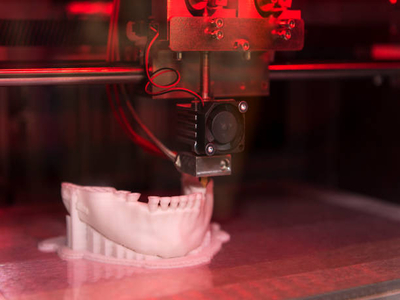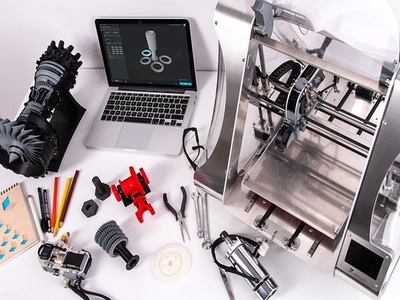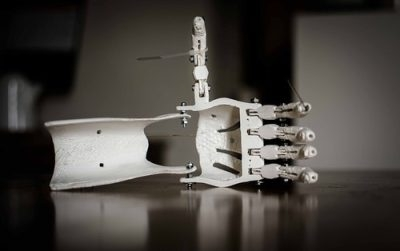3D printing is no longer a new technology. Since its development more than three decades ago, it has evolved from a niche hobby to a mainstream manufacturing process.
Today, 3D printers can be found in homes, schools, and businesses all over the world. But how hard is 3D printing?
What do you need to know before you start using one? In this blog post, we’ll answer these questions and more!
How Hard is 3D Printing Really?

3D printing is quickly emerging as one of the most transformative technologies of modern times.
While many believe that 3D printing is easy, this is a misconception that overlooks the complex and time-intensive process involved in creating high-quality prints.
- First, 3D printers must take into account a wide range of variables, including material composition, printing precision, and post-printing finishing techniques.
- In addition, the software used to create files for these printers can be tricky to master, requiring months or even years of dedicated practice and development.
- Finally, when dealing with rare or customized materials or designs, it can be difficult to find the right printer and settings in order to achieve optimal results.
Overall, despite all of its advantages, 3D printing is a difficult process that requires a lot of time and commitment.
However, with diligent effort and a clear goal in mind, anyone can achieve success in this exciting new field!
How Hard Is 3D printing? Things You Need To Know!
What Is 3D Printing?
3D printing is a breakthrough technology that has revolutionized the way we think about manufacturing.
By using computer-aided design (CAD) software, specially designed printers can turn digital designs into real 3D objects.
This process involves building up layers of material in a very precise, controlled way and allows for the creation of incredibly complex shapes that would be impossible to construct any other way.
Advantages Of 3D Printing
One advantage of 3D printing is that it enables manufacturers to create customized products very quickly and at a low cost.
For example, doctors can now use this technology to print out custom prosthetics for patients, making it possible to produce highly personalized solutions for a range of medical conditions.
Another exciting application is in the area of product prototyping.
Designers can devise new creations, immediately print them out as prototypes, and get near-instant feedback from users in order to refine their designs.
Overall, 3D printing offers enormous potential for transforming our world as we know it, connecting us through new tools and innovative solutions.
Software Used For 3D printing
There are a number of different software options available for those looking to use 3D printing.
While some programs are designed specifically for this purpose, others are general-purpose tools that can also be used for 3D modeling and printing.
For example, popular software choices include TinkerCAD, SketchUp, and Blender.
All of these allow users to easily create and modify models and transform them into instructions for the printer.
Additionally, there are some specialized programs like EnvisionTEC’s Perfactory Desktop Software or Boston Digital’s Visual TFP that are tailored specifically to the needs of high-end industrial printers.
Ultimately, it’s important to carefully consider your own needs when selecting a 3D printing software program.
Certain options may offer more functionality or flexibility than others, but regardless of which program you choose, the right software can be essential to getting the most out of your 3D printer.
Hardware used for 3D printing

When it comes to 3D printing, having the right hardware is essential for maximizing efficiency and minimizing errors.
This includes not just the printer itself, but also the various components that are used to make prints possible, such as filaments, sensors, and software.
Some key pieces of hardware for 3D printers include heated print beds for adhering the material to surfaces and extruders for melting and extruding the filament material into intricate shapes.
Sensors for monitoring print quality and detecting problems early on in the process is also critical to successful prints.
By understanding these essential elements and knowing how to properly configure them, you can create high-quality prints with your 3D printer.
So, if you’re looking to start or improve your 3D printing workflow, be sure to invest time in choosing the right hardware!
Skills required
3D printing is a type of additive manufacturing technology where a three-dimensional object is created through successive layers of material until the entire object is complete.
The main difference between 3D printing and traditional manufacturing methods is that 3D printing doesn’t require special tools or dyes to create a product.
All that is needed is a computer-aided design (CAD) file and a 3D printer.
3D printers come in all shapes and sizes, but all use some form of additive manufacturing technology to create an object.
The most common type of 3D printing technology is called fused deposition modeling (FDM), which melts and extrudes thermoplastic filament to build an object one layer at a time.
FDM 3D printers are relatively inexpensive and easy to use, making them popular with hobbyists, small businesses, and schools.
Other types of 3D printing technologies include stereolithography (SLA), digital light processing (DLP), selective laser sintering (SLS), and jetting.
These technologies all work similarly to FDM, but use different materials and processes to create an object.
Things You Can Make With 3D Printers

3D printers are no longer the stuff of science fiction.
These incredible machines are now being used to create everything from medical implants to eyeglass frames.
The potential applications of 3D printing are virtually limitless, and the technology is only getting more advanced.
Here are just a few of the things that 3D printers can make:
- Medical Devices: 3D printing is being used to create customized medical devices, such as implants and prosthetics, allowing doctors to tailor devices to the specific needs of their patients.
- Jewelry: 3D-printed jewelry is often cheaper and more unique than traditional jewelry. Each piece is created using computer-aided design with no limits to the shapes and designs that can be created.
- Clothing: 3D-printed clothing is not only stylish but can be made to fit perfectly. Designers are already experimenting with ways to create custom-fit garments.
- Food: Yes, you read that correctly. 3D printers can be used to create food. From pizzas to chocolates, there are a variety of edible items that can be printed using food-grade materials.
Read More: Does 3D Printing Use a Lot of Electricity? If you’re curious about energy consumption, this guide covers what you need to know!
The Bottom Line
Whether you are a hobbyist or a professional, there is a lot to love about 3D printing. So how hard is 3D printer?
The short answer: not very hard to get started, but it definitely costs a pretty penny and can be difficult to master.
With the right tools and some practice, anyone can become a master of this exciting technology.
If you are looking for a new hobby or want to add another dimension to your business, be sure to give it a try!
Happy printing!
Read More